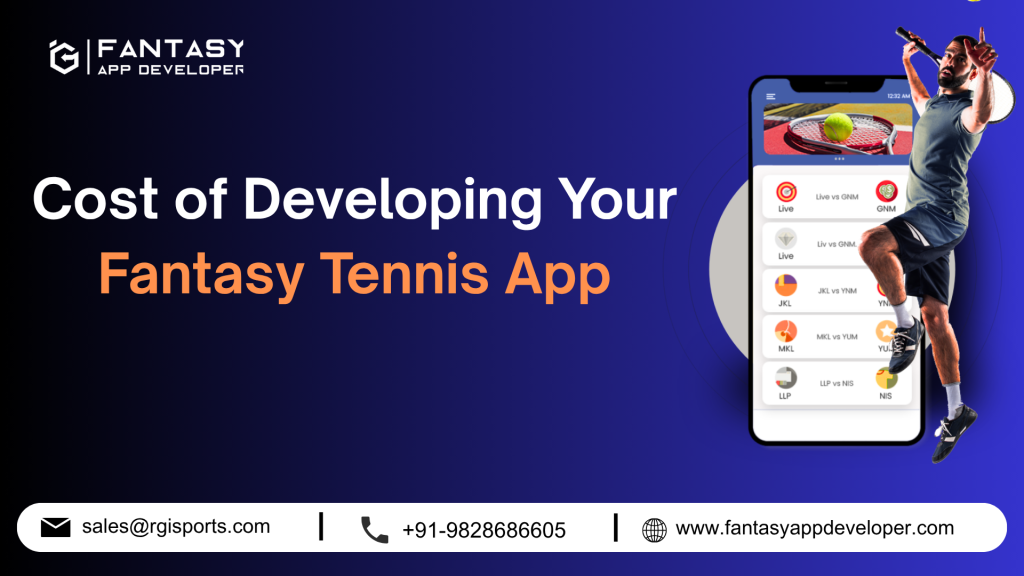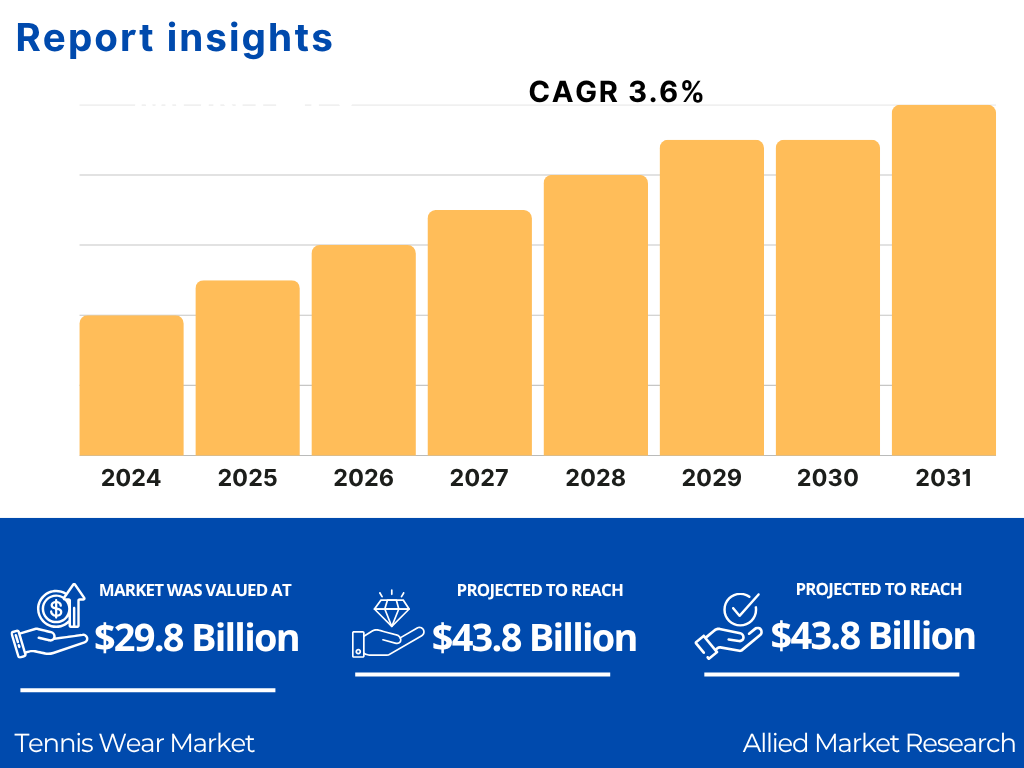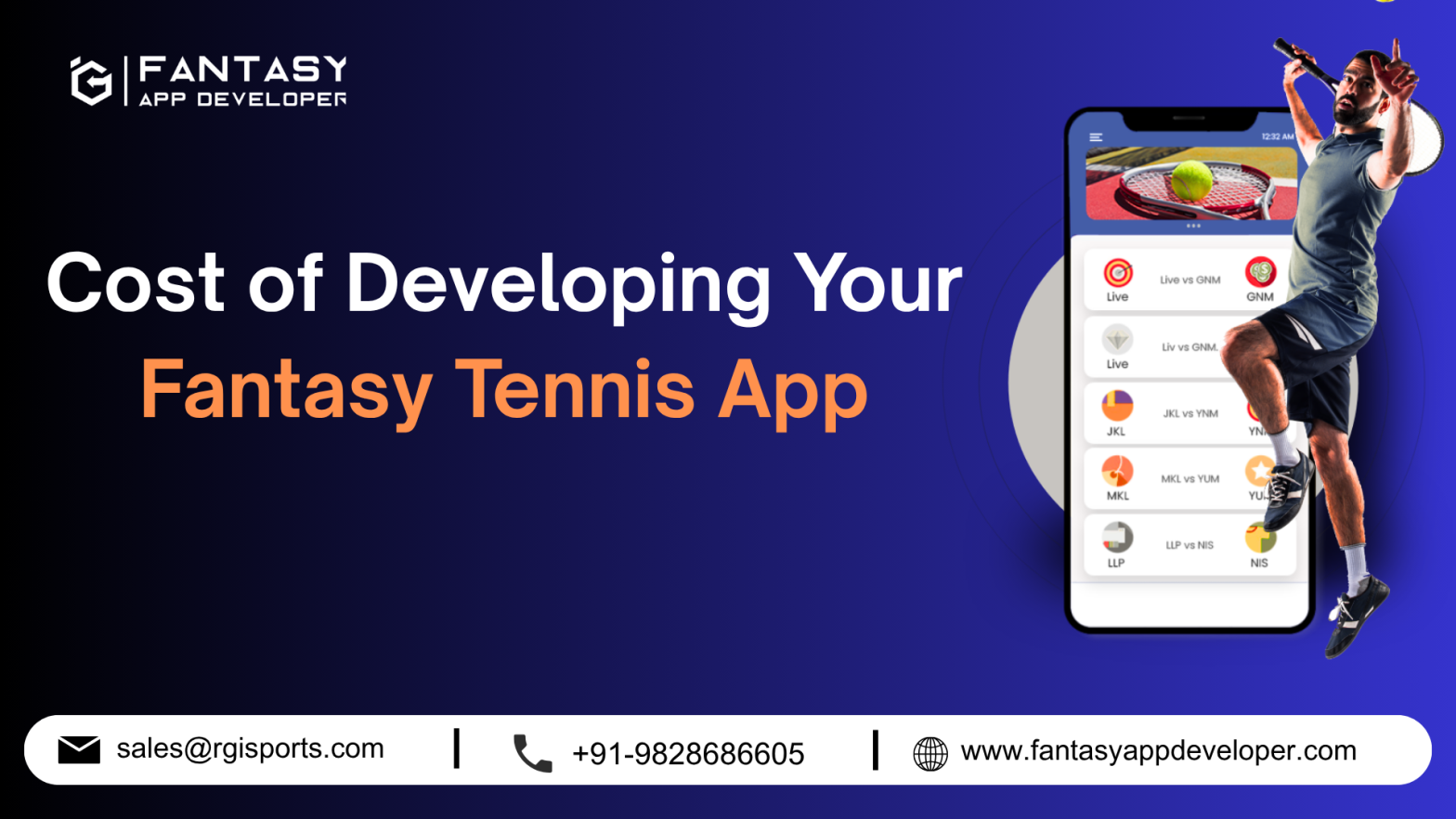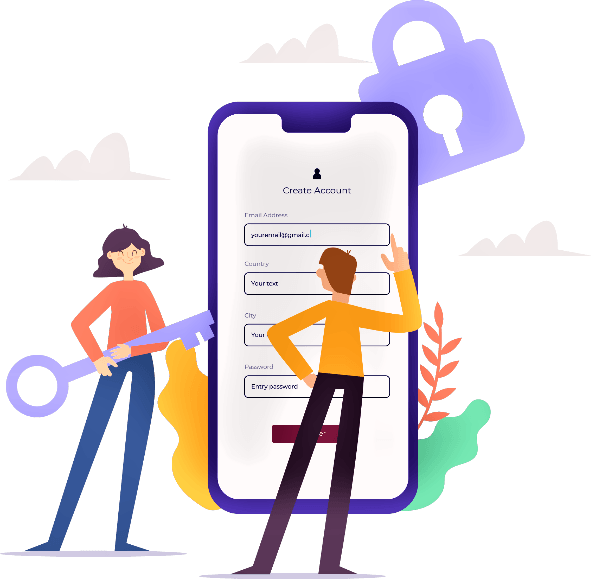
Summary:
This blog highlights that building a fantasy tennis app costs between $30,000 and $300,000+, varying with features, platform selection, and location of your team. Major expenses are development, design, backend, APIs, and maintenance. Keeping these in perspective, along with marketing and legal implications, is extremely important for transforming your application idea into a financially viable reality.
Tennis is a sport of passion, ability, and thrilling overtones. And in the growing realm of fantasy sports, it offers a special and exciting proposition. Think of a game where tennis enthusiasts can pick their dream team, follow live scores, compete with friends, and win cash. Sounds like a winner, does it not? But before you see your app ruling the app stores, let’s discuss the cost of developing a fantasy tennis app.
Building a fantasy tennis app is not an easy, straight-set win task. It involves multiple factors determining the ultimate price. From the features you have in mind to the people you hire, each choice tightens your purse strings. Therefore, let’s discuss the main cost drivers, providing an honest guide to making your fantasy tennis vision a reality.
Don’t Let Costs Put Your Dream on the Sidelines. Book a Free Consultation with Our Sports App Developers.
Understanding the Tennis Market Value Proposition
Before we get to the pricing, it’s important to establish your app’s value proposition. Are you looking at a daily fantasy sports (DFS) format with brief, frenetic play, or a season-long league that challenges strategic stamina? Will it be a niche app dealing only in Grand Slams, or will it deal with the full ATP/WTA tour? Your vision determines the sophistication, and sophistication translates to expense.
The world fantasy sports industry is on the rise, and it will hit over $78.5 billion in 2030. With its universal popularity and devoted following, tennis is an ideal candidate for innovation here. A successful fantasy tennis app will be able to ride this huge market, providing exciting experiences and significant revenue channels.
Global tennis market size was valued at $4.9 billion in 2022 and is projected to reach $8.9 billion by 2032, registering a 6.14% CAGR during 2024-2032. Increasing global interest and participation in the sport are driving the growth.
Global Tennis Market: Size, Growth & Trends

As per the reports by Allied Market Research, the tennis market worth $29.8 billion in 2023, it’s anticipated to reach $43.8 billion by the year 2034, with a consistent 3.6% CAGR. Performance and casual tennis wear becoming more popular globally is included.
Projected at $2.14 billion in 2023, it’s anticipated to grow to $2.89 billion by 2032. An increasing demand for fashion-forward and comfortable tennis apparel translates to a 3.3% CAGR.
Projected to be worth $4.59 billion by 2030, this segment is growing at a 2.2% CAGR. It consists of such necessities as balls, bags, nets, and accessories employed by players ranging from recreational to professional levels.
Worth $545.8 million in 2023, it’s expected to grow at a 3.4% CAGR until 2030. Ongoing innovations and needs for recreational and professional players propel this market.
Cost Of Developing A Fantasy Tennis App - A Detailed Breakdown
Let’s break down the main factors that drive the overall cost of building a fantasy tennis app:
| Category | Description | Estimated Cost Range (USD) | Notes & Considerations |
|---|---|---|---|
| Initial Development Costs | The most significant cost driver. | ||
| Feature Set: Basic Features | User Registration, Team Creation, Basic Scoring, Leaderboards, Push Notifications, Basic Admin Panel | $20,000 - $70,000 | For an MVP (Minimum Viable Product). |
| Feature Set: Advanced Features | Real-time Live Scoring, Advanced Player Stats, Multiple Contest Formats, In-App Chat, Payment Gateways, AI/ML Integrations | $50,000 - $180,000+ | Each additional feature adds complexity and cost. |
1. Fantasy Tennis App Feature
This is likely the most important cost determinant. A minimal MVP will cost less than a richly featured, highly interactive site. You can go through our previous blog to learn about the features of the fantasy sports app. Here’s a list of key and advanced features and how they affect costs:
Basic Features (Estimated Cost: $20,000 – $70,000)
- User Registration & Profile Management: Secure login (email, social media), personalized profiles, basic settings.
- Contest Browse & Joining: Users can view listed contests (public/private leagues), filter by entry fee, prize pool, etc.
- Team Building & Management: Members pick actual-world tennis players within a limited budget or draft structure.
- Basic Scoring System: Points scored according to pre-agreed player statistics (e.g., number of wins, aces, break points won).
- Leaderboards: Showing rankings within individual competitions and overall.
- Push Notifications: Simple reminders for future matches, contest results, etc.
- Admin Panel: A back-end interface to manage users, contests, and content.
Advanced Features (Substantially add cost, reaching into the $70,000 – $200,000+ range)
- Real-time Live Scoring & Player Stats Integration: This is highly important for fantasy sports and tends to need integration with third-party APIs. Consider real-time points updates, match progression, and in-depth player statistics.
- Advanced Player Analytics: Historical player information, past performance, head-to-head stats, injury news, and predictive analytics. This may include AI/ML integration for player suggestions.
- Multiple Contest Formats: Go beyond simple salary cap or draft, and look for features such as “pick’em” contests, survivor pools, or specialized league rules.
- In-App Chat & Social Features: Allowing users to chat in leagues, share achievements, and challenge friends.
- Referral Programs & Loyalty Rewards: Rewarding user acquisition and retention via bonus and discount offers.
- Multiple Payment Gateway: Integrating diverse secure payment methods (credit cards, digital wallets, even cryptocurrency).
- Live Match Streaming (Integration): Although not streaming directly, embedding official broadcasters’ links or embedded players will increase engagement.
- Personalized News Feeds: Content that is customized according to user interests, followed players, and league events.
- Gamification Elements: Badges, achievements, virtual currencies, and other interactive aspects to enhance engagement.
- Multilingual Support: Reaching out to an international clientele.
- Improved Security Features: Strong fraud detection, data encryption, and user authentication.
2. Native vs. Cross-Platform
Your choice in this matter greatly influences development time and expense.
| Category | Description | Estimated Cost Range (USD) | Notes & Considerations |
|---|---|---|---|
| Platform Choice | Impacts development time and future maintenance. | ||
| Platform Choice: Native (iOS only OR Android only) | Dedicated development for one operating system. | $80,000 - $150,000+ | Higher performance, but duplicate effort for both platforms. |
| Platform Choice: Cross-Platform (Flutter/React Native) | Single codebase for both iOS and Android. | $50,000 - $180,000+ | Often a more cost-effective choice for fantasy apps. |
Native App Development (iOS and Android individually):
- Advantages: Best performance, smooth user experience, complete access to device functionality.
- Disadvantages: More expensive to develop (basically creating two independent apps), longer development time.
Cost Impact: Typically begins from $150,000 or higher for a feature-loaded app.
Cross-platform development (e.g., Flutter, React Native):
- Advantages: Create once, run on iOS and Android, quicker time to market, reduced development expense.
- Disadvantages: Could have limited performance for extremely sophisticated animations or certain device functionalities, although these tend to be insignificant for the majority of fantasy applications.
Cost Impact: May begin at $30,000 – $70,000 for a simple application, and continue to $180,000+ depending on the advanced features.
Considering that fantasy sport apps are data-driven and must display live updates, cross-platform options such as Flutter or React Native are usually a very cost-efficient, effective solution since they enable faster iteration and maximum reach from the very beginning.
3. Design (UI/UX)
Aesthetic and intuitive user interface (UI) and fluid user experience (UX) are most crucial when it comes to user retention.
| Category | Description | Estimated Cost Range (USD) | Notes & Considerations |
|---|---|---|---|
| Design (UI/UX) | Visual appeal and user-friendliness are crucial. | ||
| Design: Basic UI/UX | Template-based, minimal customization. | $5,000 - $20,000 | May lack a unique brand identity. |
| Design: Custom UI/UX | Tailored design, wireframing, prototyping, and animations. | $20,000 - $80,000+ | Recommended for a premium, engaging experience. |
- Simple UI/UX (Minimal custom design or template-based): Less expensive, but may not have an exceptional brand identity.
- Custom UI/UX (Branded to your brand and user experience): More expensive, but provides a high-end, recallable experience. Includes wireframing, prototyping, and iterative design cycles.
Cost Impact: Varies from $5,000 for extremely simple designs to $50,000 – $120,000+ for complex, highly custom, and user-focused designs.
4. Backend Infrastructure & APIs
The backend is where the magic occurs – data storage, user authentication, score logic, and real-time updates.
| Category | Description | Estimated Cost Range (USD) | Notes & Considerations |
|---|---|---|---|
| Backend & APIs | The core infrastructure and data sources. | Critical for real-time fantasy sports. | |
| Backend & APIs: Backend Development | Database setup, server logic, and user management. | $20,000 - $70,000 | Scalability requirements directly impact cost. |
| Backend & APIs: Third-Party API Integration | Tennis data feeds (live scores, stats), payment gateways. | $10,000 - $30,000+ | Initial integration cost. Ongoing subscription fees apply (see below). |
- Database: Selecting the appropriate database (e.g., MongoDB, PostgreSQL, MySQL) affects scalability and cost.
- Server Infrastructure: Cloud-based providers such as AWS, Google Cloud Platform, or Microsoft Azure provide scalable solutions. The price varies with the anticipated user load and volume of data.
- API Integration: This is an important and frequently underappreciated expense. You’ll require solid data feeds for current scores, player stats, match listings, and so forth.
- Tennis Data APIs: Companies such as API-Tennis.com or Goalserve have different plans. For example, API-Tennis.com has plans from $40/month (8,000 requests/day) to $80/month (200,000 requests/day) with yearly discounts. Goalserve’s 12-month subscription is available for $1200. These amounts accumulate every year.
- Payment Gateway APIs: Incorporating secure payment platforms such as Stripe or PayPal.
- Social Media APIs: For share and login purposes.
Cost Impact: Backend application development and API integration would cost $20,000 – $70,000 in initial setup, with additional monthly expenses in API subscriptions and server administration ($1,000 – $10,000+ per year).
5. Development Team Location & Expertise
Geographical location and local experience of your development team have a powerful impact on labor costs.
- North America/Western Europe: Peak hourly rates ($100 – $250+ per hour).
- Eastern Europe/Latin America: Mid-range fee ($50 – $100 per hour).
- Asia (e.g., India): More competitive prices ($25 – $50 per hour).
A typical team for a fantasy sports app includes:
- Project Manager
- UI/UX Designer(s)
- Frontend Developers (iOS, Android, or cross-platform)
- Backend Developers
- Quality Assurance (QA) Engineer(s)
- Business Analyst (optional, but recommended for complex projects)
Cost Impact: This can be a substantial portion of the budget. For a moderate to advanced app, expect development team costs to be a significant chunk of the overall expenditure.
6. Testing & Quality Assurance (QA)
| Category | Description | Estimated Cost Range (USD) | Notes & Considerations |
|---|---|---|---|
| Testing & QA | Ensuring a bug-free and smooth user experience. | $5,000 - $20,000 | Typically, 10-15% of the total development cost. |
There is no way around proper testing to guarantee a bug-free and seamless user experience. It involves functional testing, UI testing, performance testing, security testing, and usability testing.
Cost Impact: Usually 10-15% of the overall development cost.
7. Deployment & Launch
| Category | Description | Estimated Cost Range (USD) | Notes & Considerations |
|---|---|---|---|
| Deployment & Launch | Getting your app onto app stores. | $3,000 - $10,000 | Includes developer account fees and publishing efforts. |
Approval and deployment of your app on the Apple App Store and Google Play Store requires some cost and procedure.
Cost Impact: Typically a lesser amount, from $3,000 – $10,000, including developers’ accounts.
The Grand Total: A Range of Possibilities
Taking all this into account, the price of creating a fantasy tennis app can be quite broad:
- Basic MVP (Minimum Viable Product): $30,000 – $70,000 (centered on basic functionality, one platform or simple cross-platform)
- Moderate Feature Set: $70,000 – $150,000 (supports more advanced features, strong UI/UX, cross-platform)
- Advanced, Feature-Rich Platform: $150,000 – $300,000+ (rich features, AI/ML integrations, scalable backend, high-end design, multi-platform)
| Category | Description | Estimated Cost Range (USD) | Notes & Considerations |
|---|---|---|---|
| Total Initial Development (Approx.) | Varies significantly based on complexity. | $30,000 - $300,000+ | This range covers MVP to a highly advanced, feature-rich app. |
Important Note: These are broad estimates. The actual cost will vary depending on your particular needs, the company you select to develop with, and unexpected complexities that might be encountered during development.
Post-Launch & Ongoing Legal Costs
Your budget doesn’t stop at development. Take these important factors into consideration:
| Category | Sub-Category / Description | Estimated Annual Cost (USD) | Notes & Considerations |
|---|---|---|---|
| Post-Launch & Ongoing Costs | Essential for long-term success and growth. | ||
| Post-Launch & Ongoing Costs: Maintenance & Support | Bug fixes, performance monitoring, security updates, and OS compatibility. | 15-20% of Initial Dev Cost (or $5,000 - $30,000+) | Crucial for app stability and user retention. |
| Post-Launch & Ongoing Costs: API Subscriptions | Ongoing fees for real-time tennis data. | $1,000 - $12,000+ | Varies based on data volume and provider (e.g., API-Tennis.com, RapidAPI). |
| Post-Launch & Ongoing Costs: Server & Hosting | Cloud infrastructure (AWS, Google Cloud, Azure). | $1,000 - $10,000+ | Scales with user base and data traffic. |
| Post-Launch & Ongoing Costs: Marketing & User Acquisition | ASO, social media campaigns, paid ads, PR, partnerships. | $10,000 - $100,000+ | Vital for attracting and retaining users. Ongoing expense. |
| Post-Launch & Ongoing Costs: Legal & Compliance | Licensing, data privacy compliance, and ongoing legal advice. | $2,000 - $10,000+ | Especially if operating in regions with strict fantasy sports regulations. |
| Post-Launch & Ongoing Costs: Total Annual Ongoing Costs (Approx.) | Highly variable. | $19,000 - $162,000+ | This is an ongoing operational expense. |
1. Post-Launch Maintenance & Support
An app is never really “done.” Regular maintenance, bug patching, updates, and server management are key to long-term success.
Cost Impact: Usually 15-20% of the original cost of development each year.
2. Marketing & User Acquisition
No matter how great your app is, it needs to be found. Set aside a good budget for:
- Digital Marketing: App Store Optimization (ASO), social media marketing, influencer partnerships, paid ad campaigns.
- Public Relations: Creating buzz and media publicity.
- Partnerships: Partnering with tennis associations, media outlets, or sporting brands.
Cost Effect: This may be anywhere from $10,000 to more than $100,000, depending on your vision and audience.
How Much Does It Cost To Develop A Tennis App Like DraftKings? Consult Our Team to know your Fantasy Tennis App’s Budget.
How a Fantasy App Developer Shapes Your Tennis App's Budget
Creating a fantasy tennis application has diverse prices, ranging from $30,000 for an MVP to more than $300,000 for sophisticated platforms.
A Fantasy App Developer takes into account features, platform (cross-platform/native), UI/UX design, backend infrastructure, and monthly API subscriptions. It is vital to engage the correct programmer to create an equilibrium between your vision and budget, making your app launch successful and profitable.
Conclusion
Building a fantasy tennis app is a substantial investment, but with the proper strategy, implementation, and deep understanding of your target market, it can be extremely gratifying. The secret lies in beginning with a vision, focusing on feature sets, and teaming up with an accomplished development partner who understands the intricacies of fantasy sports and mobile app building.
By carefully crafting each phase, from the first brainstorm to after-launch maintenance and promotion, you can successfully navigate the intricacies of app development and serve up a fantasy tennis experience that really grabs the viewers and takes over the court. Are you ready to create the next phenomenon in fantasy sports?
Frequently Asked Questions
For a Minimum Viable Product (MVP) with basic features such as user registration, team formation, scoring, and leaderboards, you would need to allocate a minimum of $30,000 – $70,000. This would probably call for a cross-platform solution (such as Flutter or React Native) to be cost-efficient and have a minimalist feature set.
The major difference in cost is attributed to many critical points:
Feature Set: Simple apps are less expensive than apps with real-time analytics, AI capabilities, social functions, and multiple contest types.
Platform Selection: Native development (distinct iOS and Android apps) is pricier than cross-platform.
Yes, it would be less expensive initially to develop for one platform (Android or iOS) if you do native development. But it constrains your audience. For the majority of fantasy sports apps, cross-platform development (say, with Flutter or React Native) tends to be more cost-effective in the long term because you can serve both iOS and Android users using a single codebase, typically at a lower total price than two individual native apps.
Current API subscriptions for live tennis data (such as real-time scores, player stats, match calendars) cost anything between $1,000 and $12,000+ annually. This varies greatly on the actual data provider, the frequency of the data requests your app initiates, and the amount of detail you need. It’s an important recurring expense that must be included in your yearly budget.
Aside from the upfront development, there will be substantial yearly recurring expenses for:
Maintenance & Support: Bug fixes, performance optimization, OS patches (15-20% of original dev cost).
API Subscriptions: Recurring fees for tennis data, payment gateways.
Server & Hosting: Cloud infrastructure fees (proportional to user base).
Marketing & User Acquisition: Essential for growth and retention.
Legal & Compliance: Particularly for cash prize leagues, ensuring regulatory compliance.



